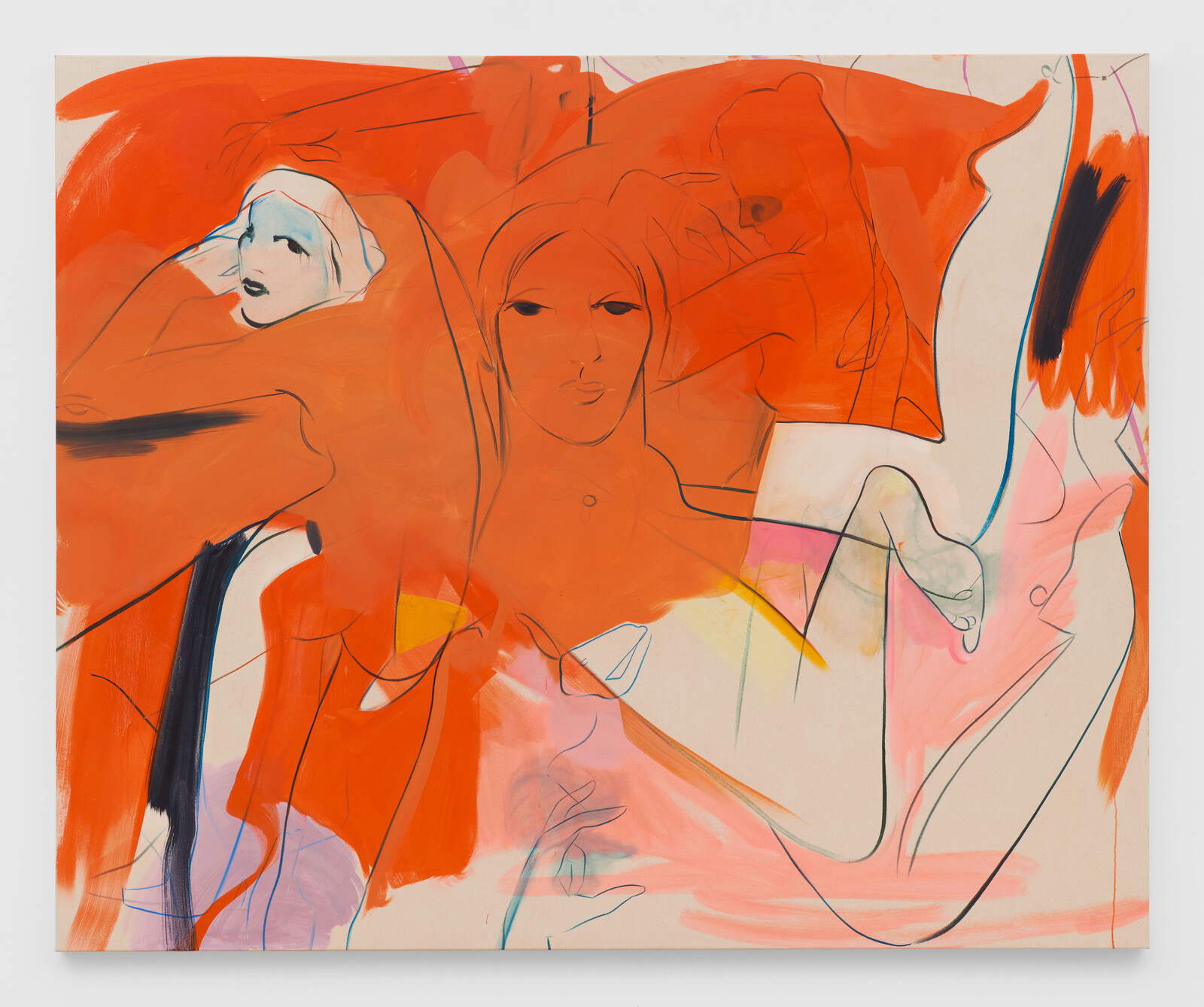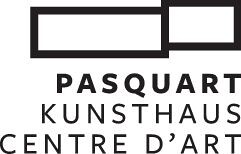Bodytronic
September 19–November 22, 2020
Seevorstadt 71
2502 Biel/Bienne
Switzerland
Hours: Wednesday–Friday 12am–6pm,
Thursday 12am–8pm,
Saturday–Sunday 11am–6pm
T +41 32 322 55 86
info@kbcb.ch
The Scottish artist France-Lise McGurn (b. 1983) paints on canvases as well as directly on the walls of exhibition spaces, often combining the two to create an immersive experience. In her work she draws on a collected archive of images from films, club flyers and magazines, as well as her own experiences, ranging from life in a city, partying and dreams to motherhood and female sexuality. She makes drawings on paper loosely based on these sources, using these as inspiration for the linear forms of figures that drift languidly on abstract areas of wash. Bodytronic refers to the rhythmic, the trance and the moving body. Individual body parts float unrestrained across the different surfaces, connecting the canvases with the wall painting they are placed directly on to. The swift brushstrokes and repeated marks spill freely across canvases onto surrounding surfaces, animating the space with suggestions of pleasure, continual motion and the layered quality of contemporary experience. McGurn’s archetypal figures suggest both the distance of city life and the strange intimacy of urban connection.
The multiple sources which McGurn refers to in the initial stages of her work most recently include films of the 70s and 80s, fashion illustration, advertising, pop stars and glamour photography. The generic features of the figures, accentuated by their repetition across the wall paintings, conveys a sense of intimacy or familiarity open to multiple readings. She is also inspired by people she encounters, studying their movements, mannerisms and hand gestures.
France-Lise McGurn’s paintings are made with oil, acrylic, spray paint and marker. Their subject is predominantly the female figure, depicted in multiple, often overtly sexual poses that play with image, identity and desire. At once remote and intimate, inviting and aloof, they imply relationships to one another and challenge or flirt with the viewer. Their abandon and energy are heightened by the vivaciousness and fluid movement of McGurn’s drawing, as well as the contrast between the sensual illustration style in which the figures are depicted and the gestural abstract areas of pastel or chemical looking colours. This pictorial strategy allows the figures their essential ambiguity: although highly contemporary, they resemble classical archetypes or recall familiar styles such as the boyish poise of figures from the Art Deco period.
Most of the work shown in the exhibition was produced during the COVID-19 lockdown. This caused the artist to reflect differently on the principal themes in her work. The experience of being surrounded by bodies, whether through walls, in bed or in the street, has always been the starting point for McGurn’s practice, while the party theme that recurs in her paintings is not directly depicted but rather invoked as the sensation of other people’s proximity. However, confinement has highlighted for her the gap between private and public lives, specifically the response to certain kinds of behaviour depending on the time of day. Her interest in aspects of nightlife, such as partying, sleep, sex or insomnia, is based on how we are determined by social structures. The repetition in McGurn’s work reflects this cycle of day and night in a form of time collapse, with the figures sometimes appearing twice.
The wall painting in the exhibition extends across four rooms in the contemporary extension of the Kunsthaus, totalling around 400m2. As with all her murals, this has not been planned in advance. An initial sketching out on the wall is followed by numerous more detailed configurations and the re-working of areas to link the rooms. Superimposed on the wall painting are not only canvases, but also a selection of France-Lise McGurn’s drawings and neon works. The latter began with a commission for a bar in her hometown of Glasgow, which inspired her to make a group of neons, essentially another form of line drawing. For the framed works on paper, the artist continues the painting onto the glass, paralleling the ways in which the exuberant spilled image unites wall and canvas.
Curator of the exhibition
Felicity Lunn, director Kunsthaus Pasquart
Publication
A publication accompanying the exhibition with texts by Michael Bracewell and Felicity Lunn will be published by the Verlag für moderne Kunst (Engl / Ger / Fr) and will be available in November (book launch on 12.11.2020).
With the generous support of SIMON LEE GALLERY, London.
Press inquiries: pr [at] pasquart.ch
At the same time: Miriam Sturzenegger - Manor Art Award for the Canton of Berne 2020




